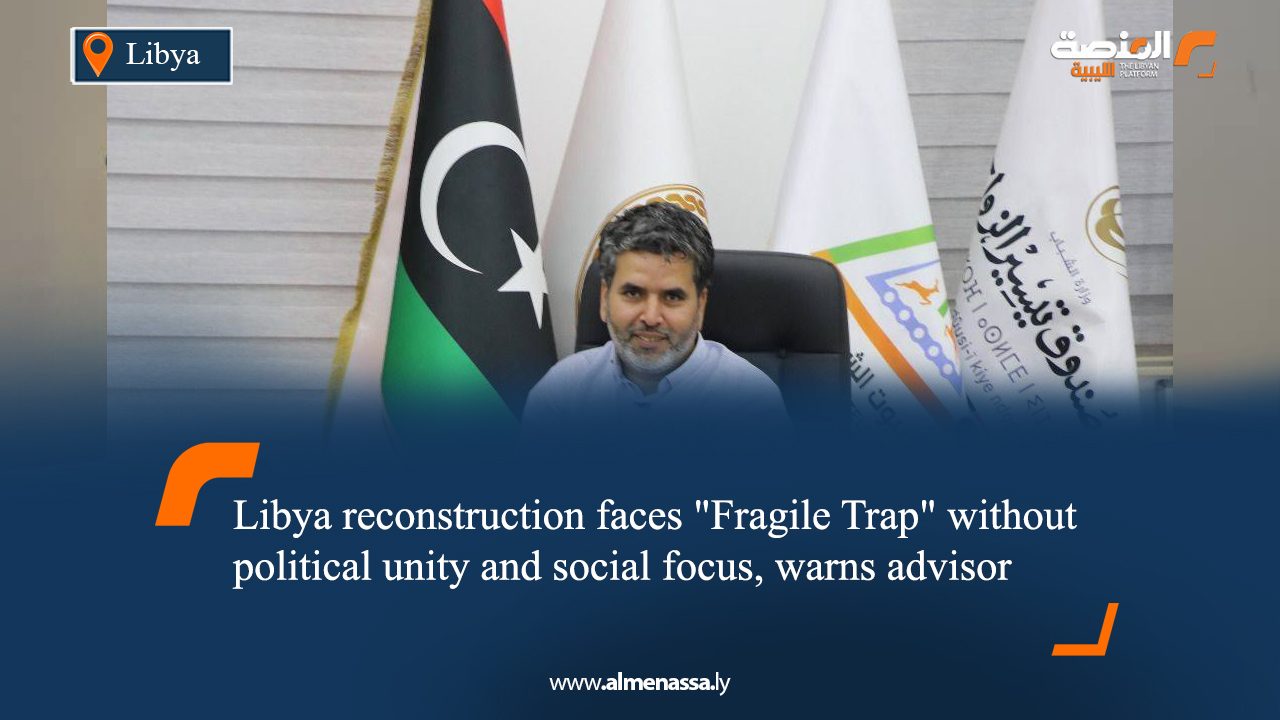Ambitious US and international efforts to rebuild Libya risk being ensnared in a “fragile trap” unless deep-seated political divisions are overcome and social and environmental dimensions are prioritised, a Libyan government advisor has warned. Analysing the reconstruction plan through a PESTEL (Political, Economic, Social, Technological, Environmental, Legal) framework spanning 2019-2025 and projecting to 2030, Al-Hadi Ali Ahmed Abdelkader, Public Affairs Advisor to the Ministry of Investment, underscored the complex interplay of factors hindering progress.
Abdelkader argued that while humanitarian initiatives supported by organisations like the IOM and UNDP have made headway, sustainable solutions remain contingent on achieving political stability and fostering inclusive governance. The future vision, he cautioned, hinges on implementing structural reforms and avoiding the “fragile trap” that could plunge Libya back into cycles of conflict if social and environmental considerations are neglected.
Political Fault Lines:
Abdelkader’s analysis highlighted the enduring political schism, with Libya still fractured between rival administrations in Tripoli and Benghazi. The stalled electoral process, hampered by disagreements over the constitutional framework and power-sharing mechanisms, continues to impede reconstruction efforts and leaves Libya languishing as a “fragile state” according to international classifications.
External Interference and Geopolitical Agendas: UN reports, Abdelkader noted, point to persistent international interference (citing Russia) and the destabilising influence of regional crises (Sudan and the Sahel) on Libya’s security, further complicating US and international efforts.
Limited Impact of Local Governance Initiatives: While the Mosa’ad Boulo initiative focused on bolstering local governance and institutional capacity building, it has been hampered by funding shortfalls and a lack of coordination among Libyan elites and intellectuals.
Economic Vulnerabilities:
The analysis painted a picture of an economy dangerously reliant on oil, which constitutes 90% of Libya’s revenue. Political instability, exemplified by the 2024 Central Bank crisis, has triggered volatile production levels, plummeting from 1.17 million barrels per day to 0.54 million before a projected recovery to 1.3 million by 2025.
Faltering Diversification Efforts: Despite initiatives by organisations like the UNDP to stimulate the private sector through improved access to finance and entrepreneurship training, particularly for women and youth-led small businesses, tangible progress remains elusive.
The Steep Cost of Conflict: The World Bank estimates that Libya hemorrhaged a staggering $600 billion during the decade of conflict from 2011 to 2023. While a 9.6% GDP growth is projected by 2025 if stability prevails, the underlying economic vulnerabilities remain a significant concern.
Social Fragmentation and Humanitarian Crisis:
The IOM estimates a staggering 350,000 internally displaced persons and 120,000 refugees in need of humanitarian assistance, a situation exacerbated by the influx of Sudanese refugees across the border.
Widespread Food Insecurity and Deteriorating Services: WFP reports indicate that 803,000 Libyans grapple with food insecurity, with multidimensional poverty rates soaring due to the decline of essential health and education services.
Limited Psychosocial Support: While the IOM has provided psychosocial support sessions to approximately 180,000 individuals, including victims of trafficking and those affected by disasters like the 2023 Storm Daniel floods, the scale of need remains immense.
Technological Lag and Disaster Preparedness Gaps:
UNDP support for upgrading land registry and credit information systems to attract private investment has been sluggish due to persistent insecurity.
Weak Early Warning Systems: Following the devastating Storm Daniel, the IOM has collaborated with Libya’s Ministry of Health to strengthen climate risk monitoring systems.
Connectivity and Innovation Deficit: Libya continues to suffer from weak communication networks and a lack of investment in innovation, hindering progress towards sustainable development goals.
Environmental Vulnerabilities Exposed:
The catastrophic Storm Daniel in 2023 starkly revealed Libya’s infrastructural fragility, devastating 11 health facilities and impacting 42,000 people, prompting the IOM to allocate $6.2 million for rehabilitation efforts.
Climate Change Impacts: International organisations are working to integrate “climate assessments” into development plans, such as the Solutions and Mobility Index, to address displacement driven by drought.
Legal Reforms Stalled:
While the IOM has adopted the Migration Resource and Response Mechanism (MRRM) to manage cross-border migrant flows and facilitated the safe voluntary return of approximately 120,000 migrants by 2025, efforts to reform laws related to national reconciliation have faltered due to the absence of rights guarantees, such as transitional justice, in the draft reconciliation law presented in 2024.
Precarious Future:
Looking ahead to 2026-2030, Abdelkader projects that economic sustainability could be achieved if political stability takes hold, with the World Bank forecasting a 9% annual growth in the non-oil sector by 2026, bolstered by diversification programmes. Efforts to build climate-resilient infrastructure are also expected to continue, with 25% of international funding potentially earmarked for green reconstruction projects.
However, Abdelkader cautioned that without a comprehensive political settlement, regional crises, such as the ongoing conflict in Sudan, could easily destabilise Libya, derailing ambitious growth plans and trapping the nation in a cycle of fragility.


